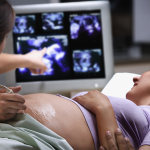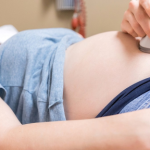Research
What is a placenta? How does it affect me?
WHAT IS A PLACENTA? DOES THE POSITION AFFECT ME?
During your pregnancy, your body begins to adjust to the baby and undergo many changes such as the growth and positioning of the placenta. The placenta produces hormones needed during the pregnancy such as lactogen, oestrogen and progesterone. These hormones are responsible for separating the mother and the baby’s blood to prevent infections. Did you know that oestrogen stimulates the mammary glands during the pregnancy to prepare mothers for breastfeeding?
What is a placenta?
A placenta is an organ that develops at 3 weeks into your pregnancy. As early as 10 weeks, the placenta can be visible during an ultrasound. The placenta is connected to the baby by the umbilical cord. This important organ helps with the development of your growing baby by transferring oxygen and essential nutrients such as calcium and protein but also removing waste from the baby’s blood. After the delivery of the baby, the placenta is then delivered which is known as the third stage of labour.
So, what are the different types of placenta positions?
Posterior placenta:
This is where the placenta attaches itself to the uterus towards the back wall closest to the spine (Figure 1). With a posterior placenta, mothers may feel stronger movements and kicks of the baby earlier on during their pregnancy.
Anterior placenta:
Anterior is when the placenta is located between the front of the stomach and baby (Figure 1). With having an anterior placenta, mothers may experience less feeling the baby’s movement as the placenta creates a barrier between the baby and the mother’s stomach. Having this placental positioning is normal and doesn’t affect the growth and development of the baby.
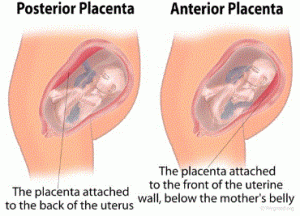
Figure 1: Distinguishing the difference between posterior and anterior placentas.
Fundal placenta:
This is when the placenta is positioned at the top of the uterus (Figure 2). There are 2 types of fundal positions. The fundal-anterior placenta is located on top of the womb but also extends to the front of the womb. The fundal-posterior position is located on the top of the womb but extends to the back of the womb. If your placenta is in this position, this is not a big concern as the baby will still be nourished unless you have signs of symptoms. Symptoms may include bleeding, severe back pain and abdominal pain. If these symptoms do occur, please seek medical care.
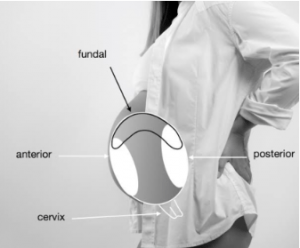
Figure 2: Location of the fundal placenta.
Placenta praevia:
The placenta praevia occurs when the placenta covers the cervix (Figure 3). If placenta covers the cervix partially or fully, this can cause complications throughout your pregnancy. Complications that may occur are bleeding from the placenta and preterm birth. If this does occur, according to the Royal Women’s Hospital you will be required to be admitted into hospital for closer monitoring of both mother and baby. Depending on how blocked the cervix is, this may result in mothers having a cesarean birth rather than a vaginal birth.
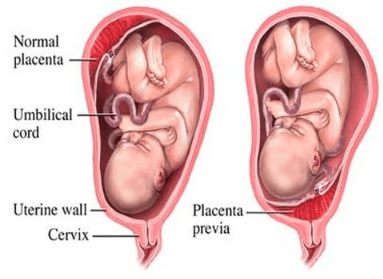
Figure 3: Comparison of a normal placenta and placenta praevia.
How to know what placenta position you have?
Mother’s will be able to find out what their placenta location is at their 12 week scan and the positioning to the cervix at their 20 week ultrasound, also known as the Morphology Scan. Your specialist will perform the ultrasound and will determine what type of position your placenta is located in.
Does it matter what placenta position you have?
If your placenta is in the posterior, anterior or fundal position, then you don’t need to be too concerned. However, if your placenta is in the praevia position this raises some concern as it blocks the cervix.
If you are diagnosed with praevia placenta, there is no medical cure for it. However, there are medical treatments that aim to ease the symptoms throughout your pregnancy. Treatment options are dependent on whether your placenta praevia is partial or complete and also other factors including gestational age, fetal position and degree of bleeding. Treatments may include bed rest and hospitalisation for close monitoring of mother and baby.
If you enjoy this article and would like to know more about amniotic fluids, how a baby’s weight is determined by ultrasound and everything else, please click here.
Disclaimer
This is a professional opinion and is based on the latest credible research. This is for general educational purposes only. Please seek professional medical advice from your personal practitioner.
References
https://www.verywellfamily.com/what-it-means-to-have-an-anterior-placenta-4690878
https://flo.health/pregnancy/pregnancy-health/complications/posterior-placenta-location
https://flo.health/pregnancy/pregnancy-health/anterior-placenta
https://flo.health/pregnancy/pregnancy-health/complications/fundal-placenta-position
https://www.pregmed.org/wp-content/uploads/2015/12/Anterior-Placenta-Picture.jpg
https://www.ultrasoundcare.com.au/images/Placental%20position%20img1.png
https://www.pregnancybirthbaby.org.au/pregnancy-0-to-8-week
https://www.betterhealth.vic.gov.au/health/healthyliving/placenta-previa
https://www.medicinenet.com/pregnancy_placenta_previa/article.htm

